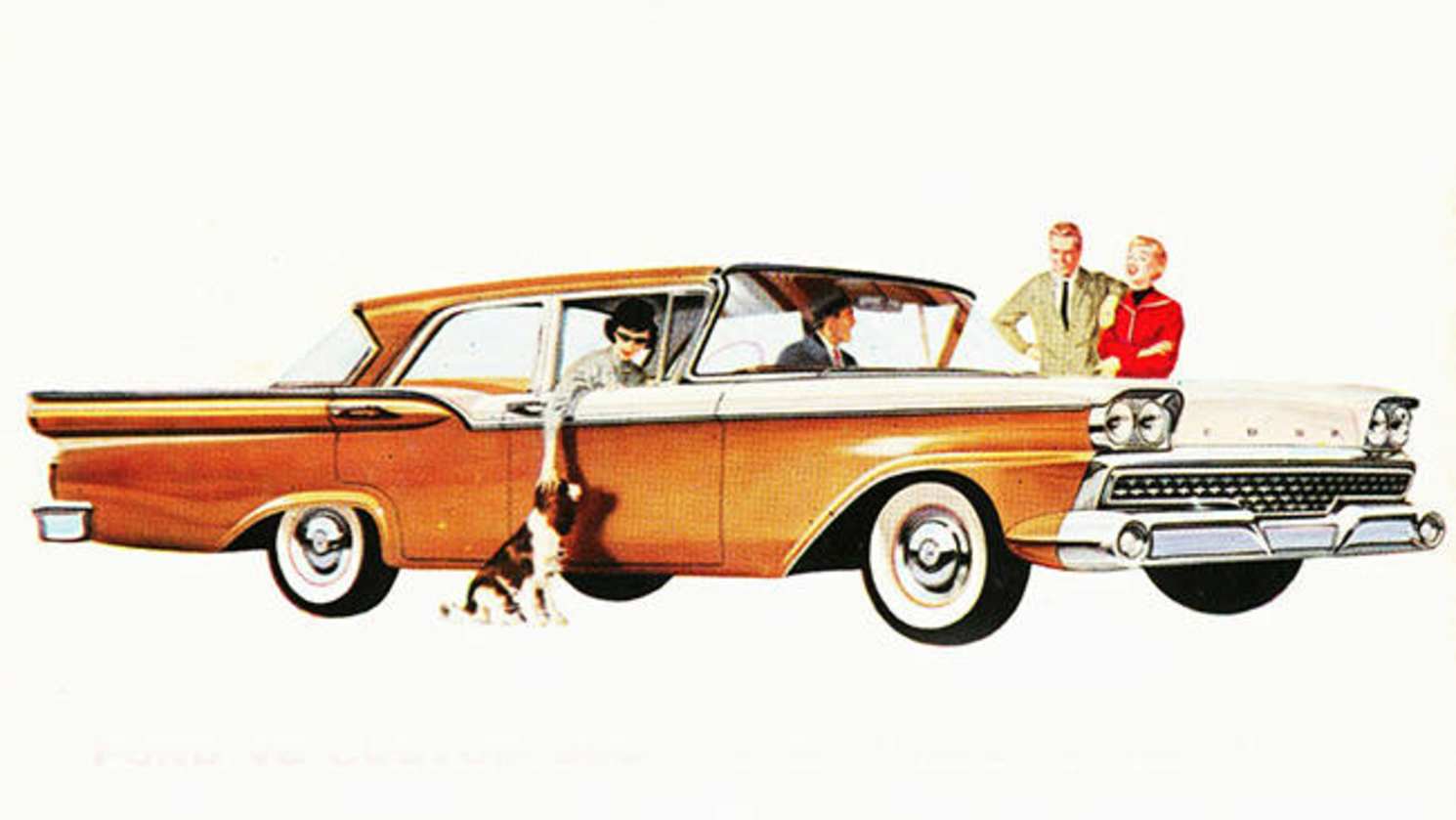Ford dropped the Fairlane in 2007 when the penny finally dropped that Australian luxury car buyers had turned their backs on it, turning instead to brands like Mercedes-Benz, BMW and Lexus. But it was a different story back in the late-50's when the Fairlane was the car to be seen in if you wanted to flaunt your success.
Ford first launched the Fairlane badge in 1959 and, apart from a brief hiatus in the mid-1960's it carried on until its ultimate demise at the end of 2007. It followed the same formula right to the end, but by then size wasn't the ultimate measure of a luxury car and size was the Fairlane's biggest selling point.
MODEL WATCH
Australia was under the spell of America late in the 1950's and many local car buyers aspired to own a big 'Yank Tank'. The closest they could come to owning a big American car was the 'Tank' Fairlane Ford released in 1959 to replace the long running and very successful Customline series. The Fairlane had its roots in America, but the cars that bore the badge in Australia were supplied through Ford of Canada.
Ford offered three models, the rather Spartan Custom 300, the more luxurious Fairlane 500, and the vast Ranch Wagon station wagon. All came in component form, they were already right-hand drive, and were assembled locally. In the process they were fitted with a handful of local parts, these including 15-inch wheels to increase the ground clearance for Australian conditions, glass, seats and interior trim.
All had the distinctive rumble of Ford's 332 cubic inch (5.4-litre) overhead valve Y-Block V8; there was the choice of a three-speed column shift manual gearbox or a two-speed auto. The front suspension was independent with coil springs and telescopic shock absorbers, while the rear was suspended on half elliptic leaf springs with telescopic shock absorbers for damping.
Steering was by worm and peg without power assistance, and braking was done with large unassisted drums all round. Vinyl and fabric trim was used inside where there was plenty of room for six or more adults with broad bench seats front and back. There was also plenty of capacity for luggage in the cavernous boot.
The Fairlane continued with minor revisions until 1962 when it was replaced by the 'Compact' model.
IN THE SHOP
Any car that is 50 years old need careful checking before it's purchased, and the 'Tank' Fairlane is no different. It's most important that the body is thoroughly checked for rust. Cars built in the 1950's were particularly prone to rusting, the steel used wasn't of the highest quality and the rust-prevention measures used by carmakers were rudimentary at best.
Check the front and rear floors in the cabin, and the boot floor as well, as these are known areas of rust. But also check the front and rear guards, the bottoms of the doors, under the trim across the top of the windscreen and rear window, and the windscreen pillar and the front of the bonnet.
Mechanically the Fairlane is robust and reliable, and most parts can be found at specialist parts suppliers, either here or in the US, and the Internet is a good place to find them.
ON THE ROAD
Road testers of the day were generous in their praise of the Fairlane. They were particularly impressed with its steering, braking, ride, and even its handling. Today, of course, those things would be widely criticised for being crude.
The Fairlane is a big lump of a car, its weight impacts on its performance, which could only be described as leisurely by today's standards. Weight also has the Fairlane wallowing through corners if pushed; its ride on the other hand is smooth and comfortable.
Given its 1950s limits, however, the Fairlane is a smooth, comfortable cruiser that's great fun to drive.
IN A CRASH
While it seems safety was only discovered recently carmakers were paying attention to it a long, long time ago. In the case of the Fairlane there was a deep-dished steering wheel to prevent you from cracking your head on the steering wheel hub, and the switches were located behind the wheel so you wouldn't hit them in the event of a crash.
There were no seat belts, but most cars would have had aftermarket belts fitted later on, so it's worth checking the installation to make sure it's sound, and also check the seat belt webbing for wear and tear. If they were not fitted it would be worth fitting self-retracting lap/ sash belts.
AT THE PUMP
There is no getting around it the Fairlane, with its V8 motor, is a gas-guzzler. But as they're more likely to be used as weekend cruisers than daily drivers, the impact on your wallet isn't likely to be great. The Fairlane was designed in the days of leaded petrol, but it will use 91-octane unleaded with an upper cylinder additive for valve protection. It would run better and more efficiently on 95-octane or higher. Be wary of using E10 ethanol in old engines like the Fairlane's, reports suggest it does terrible things to old engines.
LOOK FOR
- Cool '50s style
- Great weekend cruiser for the family
- Lots of interior room
- Huge boot
- V8 rumble
- Susceptible to body rust.
THE BOTTOM LINE: Affordable classic if you like to cruise the highways '50s American style.
CLASSIC RATING: 70/100
Ford Fairlane 1960: 500
| Engine Type | V8, 5.4L |
|---|---|
| Fuel Type | Leaded Petrol |
| Fuel Efficiency | 0.0L/100km (combined) |
| Seating | 0 |
Range and Specs
| Vehicle | Specs | Price* |
|---|---|---|
| 500 | 5.4L, Leaded Petrol, 3 SPEED MANUAL | $4,180 - $5,940 |







.jpg)

.jpg)



